Low code & team interaction

Chris Vinke, CEO & founder GRN Consultancy

Arnaud Disberg, Intelligent Automation Specialist

Ewout Masereeuw, Automation Expert
The ambition in hyperautomation is to achieve far-reaching automation and digitalisation across the full breadth of an organisation (automation-by-design and digital-by-design). To realise this ambition, on our map, 4 low-code pillars are essential:
- Digital experiences
- Automate and digitize work
- Data and insights
- Cloud-native
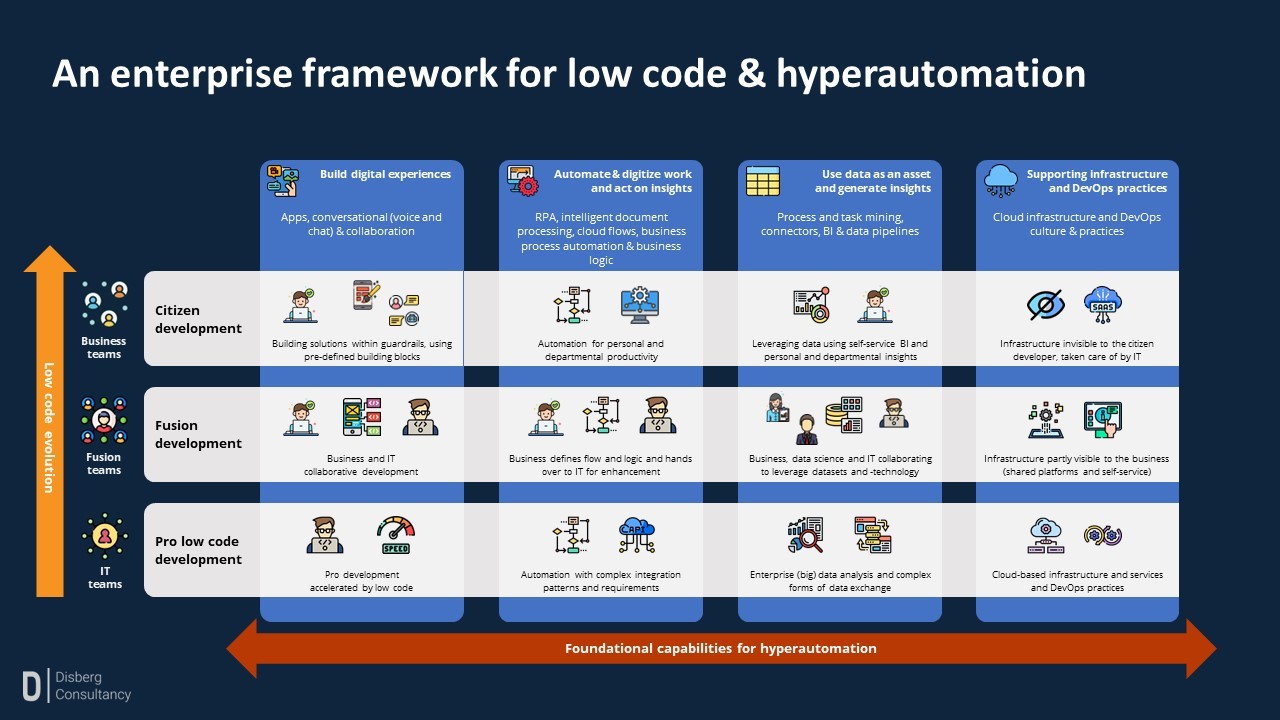
In an earlier article in this series, we have already briefly introduced these pillars, now we will go deeper. We will discuss the pillars 1-for-1 and give concrete examples, then combine the pillars into hyperautomation powerplays.
Pijler 1 - Digital experiences
De eerste pijler onder hyperautomation zijn onze digitale ervaringen en interacties, die worden vormgegeven door luisteren, praten, denken, onthouden, kijken en doen. Apps, chatbots en voicebots (conversational AI) vinden we terug in bijna ieder huishouden en worden zo het nieuwe normaal. Met “Ok Google” en “Hey Siri” zetten we muziek op of vragen we waar de files staan. En chatbots dreigen zelfs Google te vervangen en zetten hele beroepsgroepen op scherp.
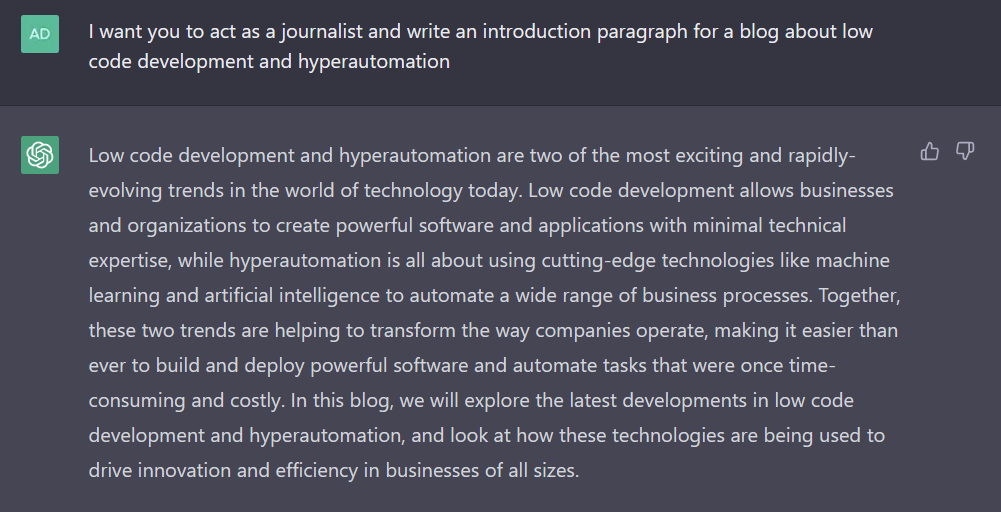
These digital experiences are not a new trend, but what is new is that we are increasingly making these digital experiences realising with low code. Low code is daarmee een enorme accelerator for introducing new digitale ervaringen and its wider application.
Pillar 2 - Automate and digitize work
The second pillar of hyperautomation is making our daily work easier and more effective by digitising and automating.
Low-code platforms for automating and digitising work address all forms of work. Such as coordinating complex business processes (workflow and case management), decision-making (BRM) and administrative work (RPA and IDP). This is the domain of Taylor en Drucker and everything in between.
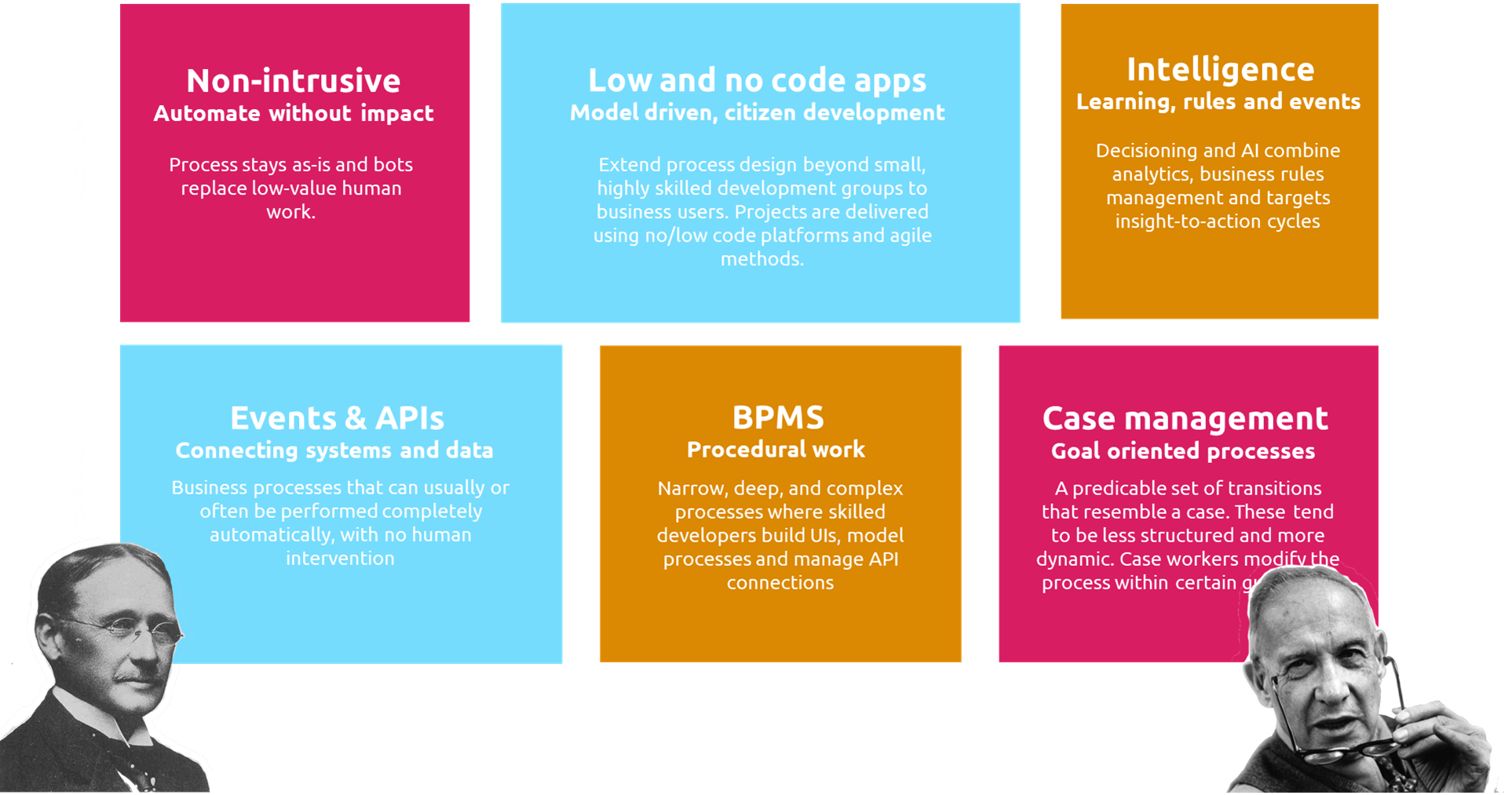
Pillar 3 - Data and insights
The third low-code pillar under hyperautomation is data - data makes our experiences meaningful. Without data, much of our work is impracticable. We therefore use all kinds of low-code technology to move, transform, share, visualise and analyse data (near) real-time. In the first pillar, we use low-code technology that helps unlock data, such as BI dashboards for data visualisation, connectoren and data pipelines for the transformation and moving data.
In the second pillar, we mainly use (meta)data to find out where and how we can best automate and digitise our work. Such as using task mining and process mining. But the most important development in this pillar is, of course, AI. Increasingly, we are using AI in low code by out-of-the-box use trained AI models to experience enrich. But also to make low-code development itself even sneller and easier to make - “you describe it, AI builds it”.
Pijler 4 - Cloud-native lage code
The last, but certainly not the least, pillar is cloud-native low code. Cloud is a huge accelerator for low code and hyperautomation because it enriches the previous pillars with cloud-native features.
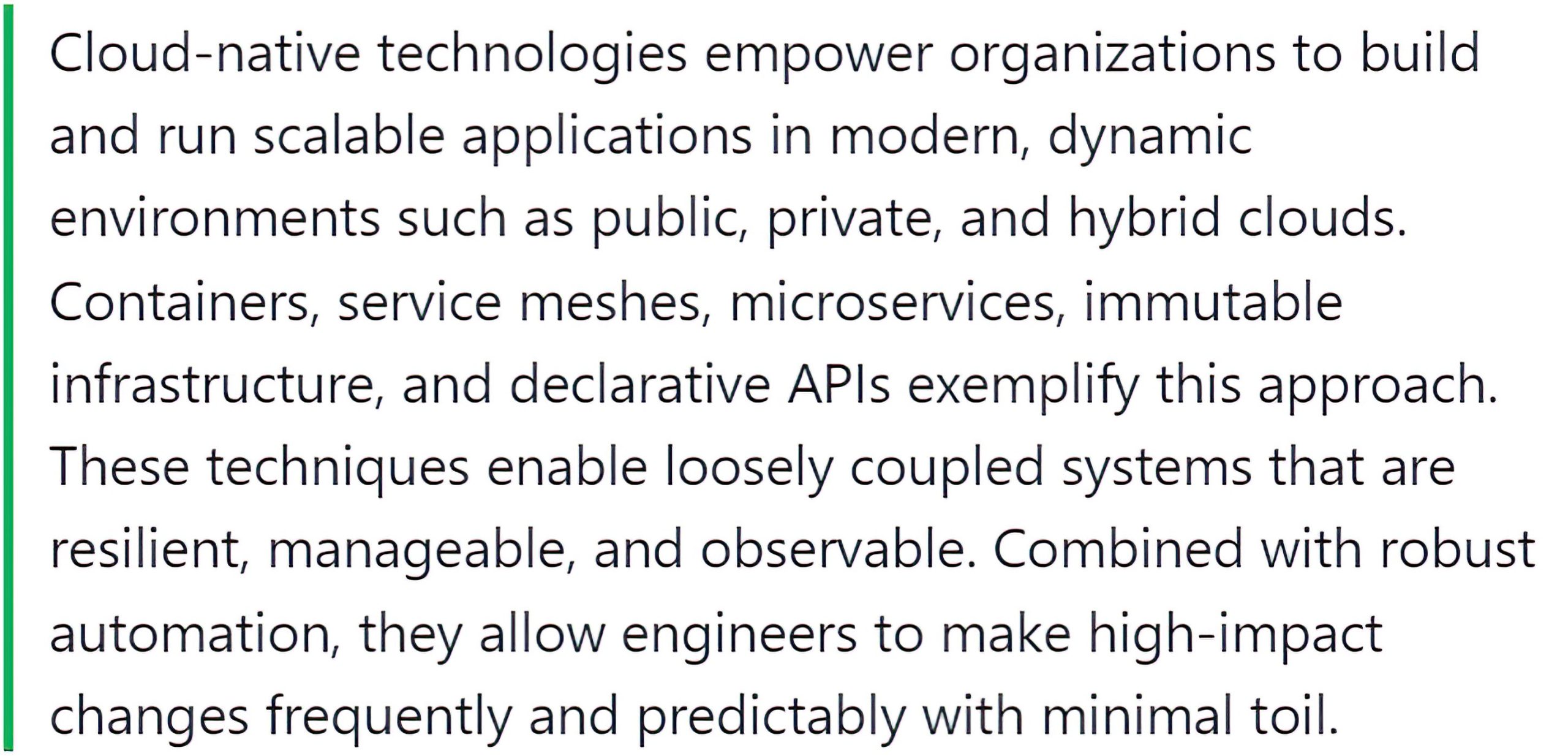
More and more low-code platforms are therefore making the move to cloud-native architecture and infrastructure, such as Mendix, Power Platform, OutSystems and Pega. The infrastructure itself is also increasingly becoming low-code. Services (IaaS, PaaS and SaaS) are largely configurable and abstraction is increasing; from serverless to infrastructure-as-code. Finally, to cloud-native also lies the DevOps movement that drives automation and innovation further by emphasising principles of continuous integration, continuous deployment, feedback, monitoring, testing and delivery. We also see this increasingly reflected in low-code platforms.
Hyperautomation powerplays
Organisations can already realise significant value with each hyperautomation pillar, but even more powerful is combining (organisation and technology) pillars. Doing so creates hyperautomation powerplays. A hyperautomation powerplay is a proactive and deliberate approach to achieve the ambition of far-reaching automation. By using hyperautomation powerplays, organisations can increase the chances of success of their digital transformation and accelerate its realisation. So when navigating the lowcode & hyperautomation map, a powerplay is actually the route to your destination. The powerplays we cover in this article are proven but not exclusive; other routes are also possible.
Powerplay 1 - Cloud-native low code apps, automation & data
The first and most obvious hyperautomation powerplay is cloud-native low code. Cloud-native apps, automation and data are available on demand, accessible everywhere, reliable and (elastic) scalable. Cloud-native is not only a better foundation, but also makes completely new service modellen possible, like robots-as-a-service, AI pair programming and natuulijke dialogen.
Low code democratizes technology and cloud makes it available on-demand, anywhere, anytime. This power play is a route full of opportunities, but one that requires careful planning. Cloud is not something that you as an organization 'just add', but requires a different mindset. The variety of cloud services that you can combine with low code and hyperautomation also often lead to choice overload. Good preparation is half the work here.
Powerplay 2 - Low code apps and automation
Low code automation is the new back-end for apps, chatbots and voicebots. Automation is used to connect applications, data and experiences. Whether it's a SaaS landscape using cloud flows with a catalog of hundreds of out-of-the-box connectors, or RPA to integrate with on-premises legacy applications. All this functionality is increasingly accessible through low code:
- RPA in the backend is a solution for the long tail, where there is no time or resources for strategic long-term solutions
- RPA for integration with legacy systems (robots-as-APIs)
- RPA for web- and PDF scraping
- Cloud automation to make use of the many out-of-the-box connectors and seamless integration with cloud services (robots as the new backend)
The exciting thing about this power play is the out-of-the-box thinking. In many organizations, low code and hyperautomation are still assigned to different teams. In addition, both low code and automation platforms are increasingly entering each other's domain and it is sometimes difficult for us to estimate where the strength and value of a platform lies due to sales and marketing. The art of this route is to walk it together with the low code and automation teams. Long walks often lead to the best conversations.
Powerplay 3 - Low code data and apps
Apps and data have always been inextricably linked – from the first 3-tier application architecture to modern microservice architecture. In general, low code platforms are based on a process perspective or a data perspective. The last category is powerplay 3 – the data model the basis for the app. Think of solutions like Airtable, Fibery and model-driven apps op Power Platform. The user defines the data model and the platform does the rest.
Even in cases where data is not the starting point, we see more and more abstraction and solutions such as Mendix data hub and Appian Data fabric all of which provide an increasingly rich data layer in low code platforms. The data powerplay is taking data as a starting point and making it work for you. Data in order, apps in order. This way you get much more out of the data you have by using low code platforms with strong data layers. Data and experience are both first class citizens in this power play.
This power play is perhaps the best route to citizen development. Citizens are not developers and do not need to understand application architecture. What they do understand is the domain in which they work and the terms, concepts and laws that apply there. The step to a data model is therefore much shorter than to logic and user interfaces.